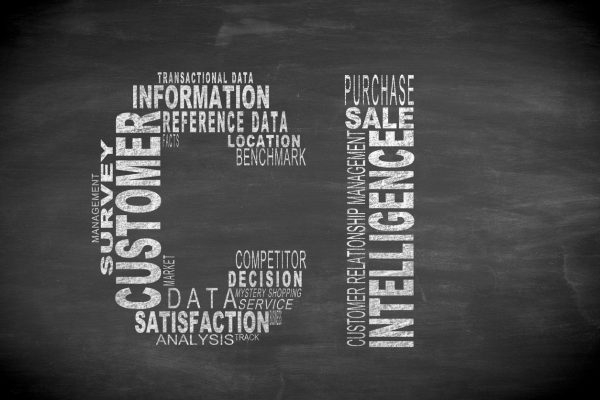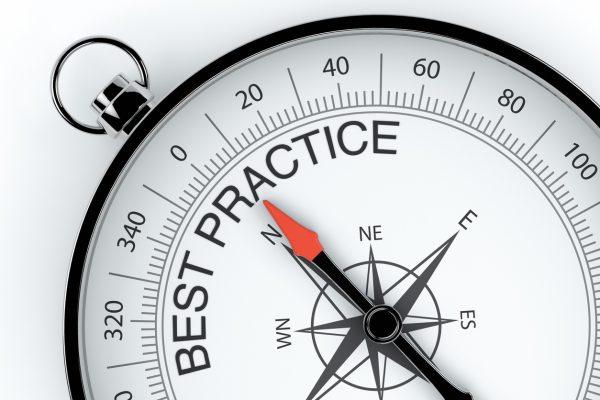Businesses of all sizes can benefit from competitive intelligence. The importance of competitive intelligence and analysis in marketing cannot be overstated. This is a process that allows you to gather information about your competitors and use it to improve your own business. It can help you understand what your competitors are doing, what their strengths and weaknesses are, and how they are positioning themselves in the market. We can use competitive intelligence in a variety of ways, including developing marketing strategies, pricing strategies, and product development plans.
In the past, only enterprise-level businesses had the funds to invest in competitive intelligence. But that is changing. Crayon’s 2017 study found that 37% of businesses did not have dedicated CI staff. This number increased by 20% in 2020.
Small businesses can now implement competitive intelligence strategies without spending a lot of money, thanks to the ease with which information is available online.
One thing to remember about competitive intelligence is the fact that it does not limit these insights to C-Suite executives. Team members can benefit from the information gathered by CI.
- We train sales personnel to address objections and ease pain points.
- Marketing can adapt their messaging to reach their users better.
- The Product team can better understand the pricing and packaging patterns of competitors.
What is Competitive Intelligence?
Competitive intelligence (CI) is gathering, analyzing, and using the information to understand the competitive environment and how it affects your business. It can help you make better decisions about what products or services to offer, where to allocate resources, and how to respond to competitive threats.

There are a variety of different methods you can use to gather competitive intelligence, including public sources such as company websites and SEC filings, private sources such as trade publications and industry analysts, and primary research, such as surveys and interviews. Once you have gathered this information, you need to analyze it to identify trends and insights. Then you need to put it into action by using it to inform your business decisions.
Competitive intelligence is an important part of any business, and it can help you gain a competitive edge. It can help you understand your competition and how they are affecting your business, so you can make better decisions about the products and services you offer, where to allocate resources, and how to respond to competitive threats.
Competitive intelligence is the organizational function that identifies risks and opportunities before they become obvious (or “early signal analysis”)
There is a clear distinction between disseminating widely available facts (such as financial reports and market statistics) and competitive intelligence, which is a view of developments and events that are aimed at gaining a competitive advantage.
Although CI often refers to competitor analysis, it is not synonymous with competitive intelligence. Competitive intelligence encompasses more than just analyzing competitors. It also includes the entire environment and stakeholders, including customers, competitors, and distributors, and technologies and macroeconomic data. It can also aid in decision-making.
And it should be an integral part of developing a business plan. Using published and unpublished sources, CI analysis gives insight into the marketplace dynamics and its challenges.
Competitive intelligence importance is recognized quickly by organizations that implement a good program. Good competitive intelligence about rivals' strategies, their financial performance, and their resource allocation can yield important insights.
Competitive Intelligence:
- Is not spying or industrial espionage. It is the legal strategic and tactical analysis and research that is used to identify threats or opportunities.
- Focuses on the external business environment.
- Is a sophisticated means to find competitive gaps and establish a strategy.
- Comes in many styles and formats, some formal and structured, and others more casual.
- Is a way of living, working, and thinking for all employees.
- Does not count on software or technology as the driving force. Management directs the process and uses critical analysis to make sense of the information.
- Is not a method of judging the market based on company assumptions. It is a way for companies to look beyond themselves into the larger market and the competitive landscape.
- Enhances the work of marketing, the sales team, financial planning, and operations.
- Respects antitrust and trade secrets laws, ethical best practices, and the corporate code of conduct of the client.
- Reduces uncertainty and decision risk in external developments.
Types of Competitive Intelligence
Strategic Intelligence
Strategic Intelligence focuses on the long-term, looking at the issues that affect a company’s ability to compete over the next few years.

The industry and the pace of change will determine the strategic intelligence time frame.
It addresses two general questions:
- “Where should we be as a company in X years?” and;
- “What strategic risks and opportunities face us?”
This type of intelligence work includes the identification and application of a method and process called Strategic Early Warning (SEW).
Experts believe that 20% of the work of competitive Intelligence practitioners should be dedicated to strategic early identification and management of weak signals within a SEW framework.
Tactical Intelligence
Tactical Intelligence focuses is on information that can make better decisions in the short term. We often link this to increasing market share and revenues.
It is the information that an individual would need to support the sale process within an organization. It examines different aspects of product or product line marketing.
Organizations can avoid unexpected surprises by having the right information. This includes expecting competitors’ moves and decreasing their response time.
Daily newspapers, such as Fortune, Business Week, and The Wall Street Journal, all use competitive intelligence research.
Major airlines alter hundreds of fares each day in response to competitors’ tactics. They use this information to plan their marketing, pricing, and production strategies.
Competitive Intelligence Tools
There are a variety of competitive intelligence frameworks that businesses can use in order to gain a competitive advantage over their competition. Some of these tools include:
- competitive analysis
- SWOT analysis
- business model analysis
- Porter’s five forces analysis
- market research
Each of these frameworks can help businesses understand their competitive landscape, identify opportunities and threats, and develop strategies to compete more effectively.

Software Tools
The internet offers a treasure-trove of information and data that can analyze your competitive situation. Whether the sales team is looking for ways to win more deals, or the leadership team working to develop a compelling long-term strategy, the internet can help inform those initiatives. Here are a few examples of online solutions that can help:
Crunchbase
Crunchbase provides a wealth of information about companies, including funding, M&A, and leadership. Crunchbase is a collaborative effort of its venture partners network and in-house data teams that use machine learning technologies to provide information about industry trends and investments. It also provides news about global companies, from startups to Fortune 1000, for millions of users.
Owler
Owler lets you view all the key information for your top competitors. You can then compare these details to identify emerging and indirect competitors in your market. Owler provides stories about your company, customers, prospects, and partners to keep you in the know. It is an excellent tool for gathering competitive intelligence.
SEMRush
The SEMRush Competitive Analysis Toolkit gives you a comprehensive view of the performance of potential partners and competitors. These tools enable you to analyze and break down the marketing strategies of your competitors from multiple perspectives, including SEO, Advertising and Content, PR, and Social Media.
This toolkit contains multiple resources that will allow you to make data-driven, accurate decisions based on quality metrics. The toolkit allows you to see how your competitors are attracting customers online, monitor their online reputation, and identify growth opportunities in low-competition niches. This information will allow you to get insights into the strategies of your competitors and, in return, help you adapt them to make your online presence stand out.
By using the right tools and techniques, businesses can get valuable insights into their rivals’ strengths and weaknesses, as well as the overall dynamics of the market. This information can help businesses make better decisions about where to allocate resources, how to price their products and services, and which areas of the market to focus on. Why is Competitive Intelligence Important?
SimilarWeb
SimilarWeb provides insight into the performance and traffic patterns of your competitors’ websites. Is their website receiving more traffic than yours? They may convert more visitors to their site than you are. Is your website attracting more visitors?
SimilarWeb will also give you information about the source of incoming traffic. Is it referral sites, organic search terms, or any other source?
SimilarWeb offers a peek at your online competition landscape. SimilarWeb’s free version shows you the top five competitors based on industry and website traffic. This information can identify weaknesses in your web strategy and help you improve it.
How Can I Use Competitive Intelligence in My Business?
If you’re looking to implement competitive intelligence in your business, here are a few tips:
- Start by creating a competitive analysis grid. This will help you track and compare your competitors to a variety of factors, such as their size, market share, product offerings, and pricing.

- Collect as much information as possible about your competitors. This includes both public and private information. You can find public information online or through industry publications. We can gather private information through interviews with customers, suppliers, and employees of your competitors.
- Use the information that you gather to develop strategies that will help you differentiate yourself from your competitors. For example, if you know your competitor is focusing on price promotions to attract customers, focus on developing a unique product that will attract customers based on other factors.
- Monitor your competitors’ activities closely and make adjustments to your strategies as needed. Competitive intelligence is an ongoing process, so you need to be continually gathering information and analyzing it to make sure that you’re staying ahead of the competition.
Competitive intelligence programs can help you grow your business by giving you the information you need to develop strategies that are differentiated from those of your competitors. By monitoring your competitors’ activities closely, you can ensure that your strategies are always up-to-date and effective, giving your sales team the edge they need to win.
Developing a Competitive Intelligence Strategy
One of the most important aspects of any business is understanding the competitive landscape. Doing so can give you a leg up on your rivals and help you make more informed strategic decisions. Competitive intelligence (CI) is gathering, analyzing, and using information about your competitors in order to stay ahead of them.
There are several ways to gather competitive intelligence. The most common methods include:
- examining public sources such as company websites and annual reports
- interviewing with customers and suppliers
- tracking mentions of your competitor in online forums and social media
- using web analytics tools to track your competitor’s website traffic and search engine rankings
- subscribing to industry publications and newsletters
Once you have gathered this information, you need to analyze it and identify any trends. What are your competitors doing that you’re not? What strategies are they using that seem to work well? What weaknesses can you exploit?
Now that you have a good understanding of your competitor’s strengths and weaknesses, you can develop a competitive strategy of your own. You may decide to focus on different markets, target different customer segments, or launch new products and services. Whatever you decide, make sure your strategy is based on sound research and analysis, and not just guesswork.
Competitive research is a critical component of any successful business. By gathering accurate information and research reports about your competitors and using it wisely, you can stay ahead of the curve and outmaneuver your rivals.
Competitive Intelligence Best Practices

Five Key Goals of Competitive Intelligence Programs
1. Win Deals
It is difficult to convince a potential buyer to choose your product or service over other options. Sales reps must differentiate their solution to convince potential buyers that it is truly unique. Without competitive intelligence, this is impossible. How can you convince others yours is better than theirs if you don’t have deep insights into the market and consumer data?
2. Improve Positioning
Prospects must feel that there is a reason to evaluate your solution before one of your representatives can engage with them. A salesperson is unlikely to be given the time of day unless they see something interesting about your offer.
Your marketing team creates a competitive position. Marketers, much like sales reps, convince prospects that their solution is unique.
Your marketing team has access to a wider variety of funnel stages than your sales staff do. This is a key difference. It’s through the brand’s positioning that marketers—specifically product marketers— establish the differentiated value of your solution. Competitive intelligence is crucial. If you don’t know your competitors, it’s difficult to attract prospects’ attention.
3. Manage Products
Product management handles (1) planning and (2) building the product. Product managers create and execute a roadmap to differentiate your solution from the competition. Without competitive insight, product managers can’t do their job. If you don’t know your competitors, it’s difficult to create something that differs from the rest.
4. Customer Retention
A new customer is a reason to celebrate when you are in a competitive market. However, just because you have gained a customer does not mean that you are immune to your competition.
That you have secured a long-term contract or even a multi-year contract, does not mean that your competitors are uninterested in your customers’ business. To ensure your customers are loyal customers, you need a customer support team. Customer success representatives must be able to quickly respond to any customer who expresses an interest in looking at other solutions.
These situations require competitive intelligence. Customer service reps who have a deep understanding of the competitive landscape will show their clients that their company’s solution is still the best.
5. Build Strategy
Executive leaders create and implement long-term strategies. This responsibility goes beyond product strategy, although that is the focus of someone who holds the positions of Chief Product Officer or Vice President of Engineering.

Executive leaders help their direct reports do their job as efficiently as possible. They also need competitive insights, such as How can we continue to grow revenue and market share over time? Is there a market we can enter? What do these markets look like? What are the ways we’re at risk? What can we do as a company to defend ourselves from the competition?
Although it may not seem obvious, the role of competitive intelligence is essential in answering these questions. It is impossible to plan for market growth without knowing who your competitors are and how they position themselves in the eyes of potential buyers. You can’t plan to enter a new market without knowing who your competitors are.
Finally, understanding your competition’s strengths and weaknesses is key to making a plan for mitigating risks.
Battle Cards
A battle card, which is usually a 1-pager, provides a quick overview of your competitors and a way to compare how you perform against them in key areas of value and performance.
It is important to identify key themes and key takeaways. Try to keep these to only three so the sales team can easily remember them.
The sales team should memorize these three points so they can quickly access the information they need. It might be helpful to have key capabilities and a comparison chart.
Consider a components table if your solution or that of your competitor has many components. Remember to include both your direct competitors and any indirect competitors in this analysis. This will include both your and your competitors’ major advantages.
It might be a good idea to tell your customers what’s on the product roadmap. If they can integrate with one platform, let them know.
Battle cards are strictly for your salespeople. You don’t want customers to know about your shortcomings and disadvantages.
Reaffirm key themes and key takeaways. Challenge your salespeople to make them a habit. Keep your battle cards updated.
Getting Started
There are a few competitive intelligence program best practices that businesses can implement to get started. The first step is to create a process for collecting and analyzing data. This can include setting up alerts for company news and announcements, tracking competitor activity online, and subscribing to industry publications.

The next step is to identify the key stakeholders who will be involved in the competitive intelligence process. This includes decision-makers within the organization and employees who have knowledge of the competitive landscape. It’s important to ensure that everyone involved has access to the resources and tools needed to carry out their role.
Finally, it’s important to establish clear guidelines for how the information will be shared and used within the organization. This will help ensure that we carry competitive intelligence activities out in a responsible and ethical manner.
By following these competitive intelligence best practices, businesses can gain a competitive edge by staying informed about their industry and the activities of their competitors.
Conclusion
There are many reasons businesses should implement a competitive intelligence program. Some of these reasons include:
- Staying ahead of the competition
- Creating a high-performance sales process.
- Understanding your competition’s strengths and weaknesses
- Determining what products and services to offer
- Gaining a competitive edge in the market
- Monitoring industry changes and trends
- Developing new strategies based on competitor actions
Competitive intelligence is critical for businesses to stay ahead of the competition. By understanding your competition’s strengths and weaknesses, you can determine what products and services to offer and gain a competitive edge in the market.
Monitoring industry changes and trends will help you develop new strategies based on competitor actions. Implementing competitive intelligence is essential for any business looking to stay ahead in today’s competitive market.
Use Competitive Intelligence in Your Business
Asymmetric, led by former Army Delta Force operator and corporate executive, Mark Hope, can help you implement these ideas in your business. You can contact Mark by email at mark.hope@asymmetric.pro, or by telephone at +1 608-410-4450, or you can schedule a complimentary strategy discussion by clicking here. You can read all of his articles on Medium.


Mark Hope
Mark A. Hope is the founder and CEO of Asymmetric Marketing – a unique agency specializing in building high-performing sales and marketing systems, campaigns, processes, and strategies for small businesses. Asymmetric has extensive experience with organizations across many industry segments. If you would like some help in implementing ideas like these in this article, feel free to give Mark a call at 844-494-6903 or by email at mark.hope@asymmetric.pro.

